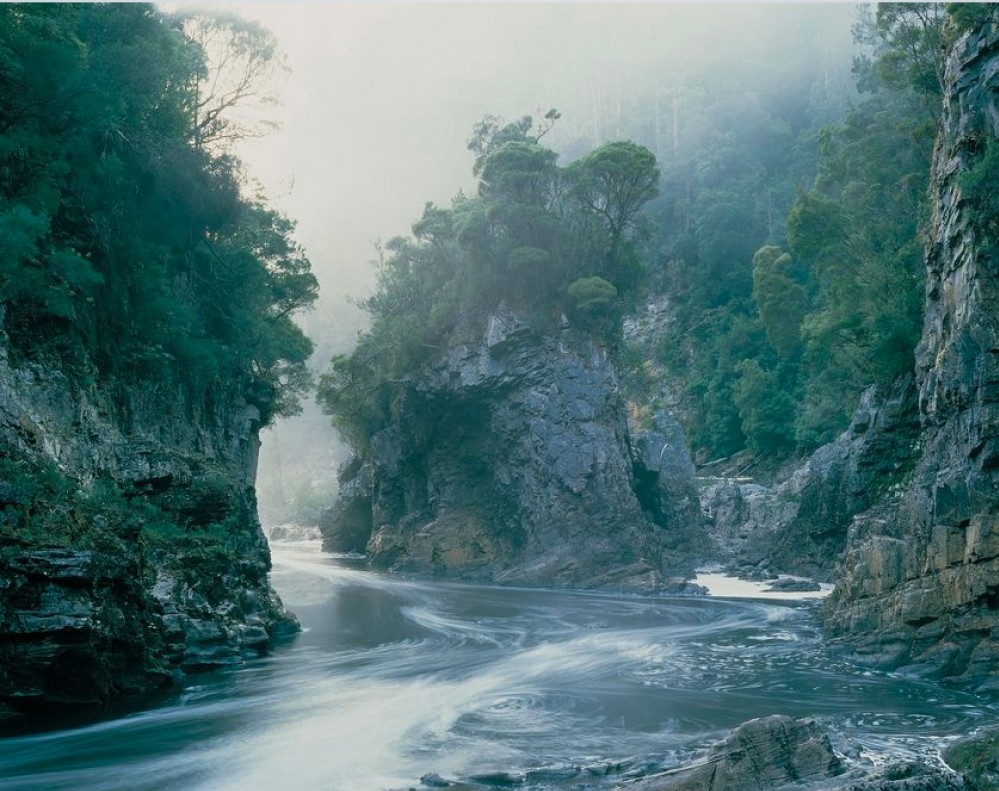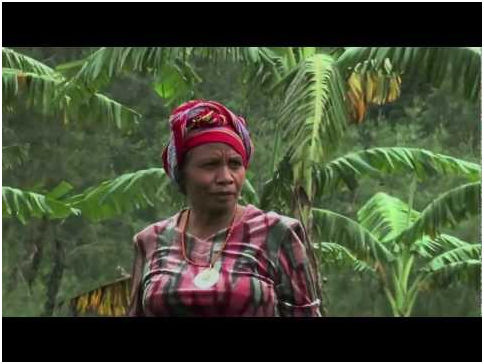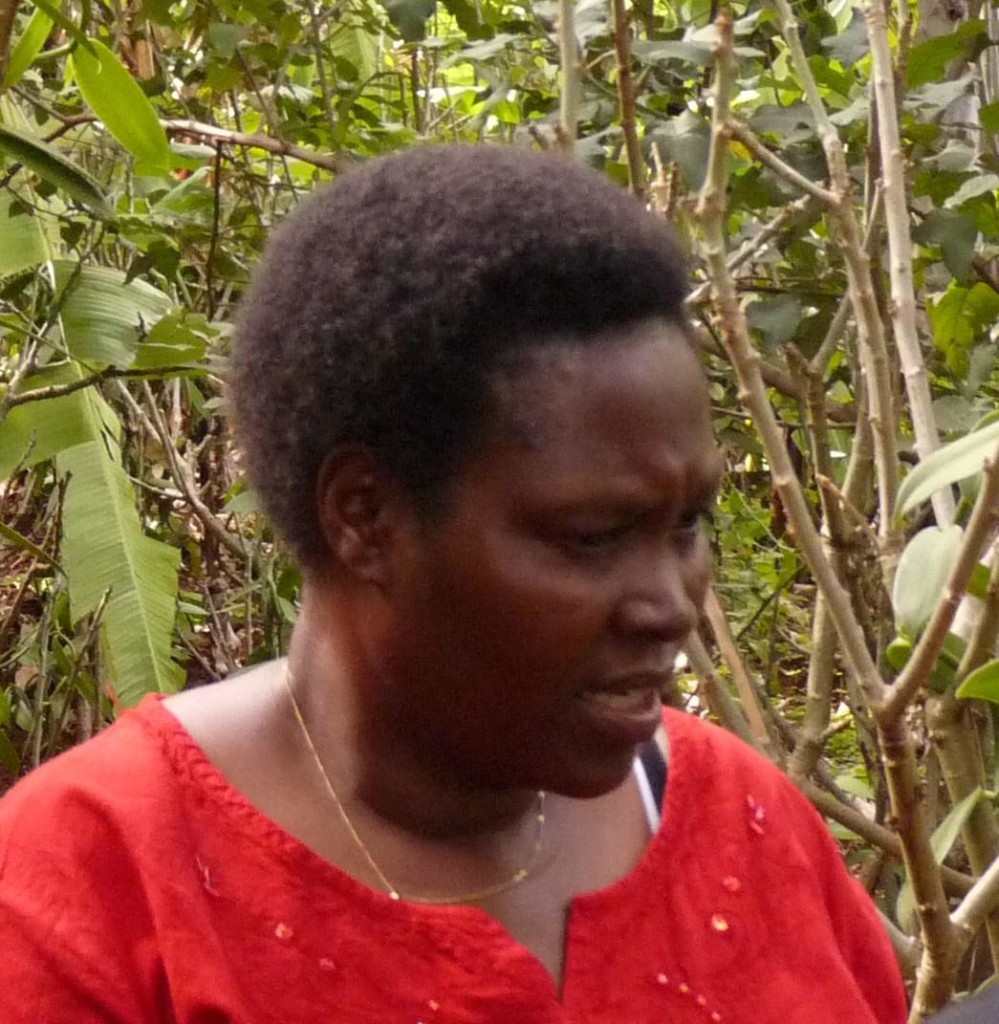I’m just back from a Women and Climate Change convening at Green Camp in Bali. Some 100 women grass roots leaders together with representatives from grantmaking organizations, women’s funds and environmental agencies, converged from across the globe for a highly significant convening.
When we were invited to attend we were also asked to bring something from our own culture that symbolized our connection to place and identity. I thought about my own sense of being an Australian and what grounded and affirmed me as a touchstone for my identity. When I really thought about it, the campaign to save the Franklin River from being dammed in Tasmania is what came to mind.
I was out camping near a river with friends from school when I first heard the band Goanna and their debut album, ‘Spirit of Place’. When I heard their music I felt turned around in my whole body and spirit. I really felt like I’d broken free of something in my mind, and I experienced expansiveness in myself and connection to country in a new way. Music was the great translator – and so too were other forms of art, as I was to discover.
In 1978, the Tasmanian Hydro Electric Commission announced its intention to build a dam to flood the Franklin River, a plan that polarized the Tasmanian community. A protest movement formed, led by activist Bob Brown and others. Then a photograph of Rock Island Bend along the Franklin River taken by Peter Dombrovskis ignited an Australia wide movement to save the dam. Over 30,000 letters of support were sent and a march attracted over 10,000 people, fueled by a film called The Last Wild River that was shown on Tasmania’s two commercial television stations. Art and activism were playing their part.

Concerned citizens formed a blockade of the dam site that would begin on 14 December 1982. On the day the blockade of the dam site began, the UNESCO committee in Paris listed the Tasmanian wild rivers as a World Heritage site. Protestors at the dam site were arrested and when Bob Brown was freed 19 days later he was successfully nominated for a seat in the Tasmanian Assembly, and later went on to lead the formation of the Australian Greens Party.
A national print campaign that included Dombrovskis’ compelling image of what was at stake resulted in over 20,000 people writing ‘NO DAMS’ on their electorate form and helped Bob Hawke, a new Labor leader, win the Federal election in 1983. As the new Prime Minister, Hawke committed to stopping the dam from being built. A legal battle between the federal government and Tasmanian state government followed, resulting in a landmark High Court ruling in the federal government’s favor that effectively stopped the Franklin from being dammed. Resistance to the protestors had been strong and yet those fighting the dam’s construction stayed united, and their efforts were captured by Goanna and its lead singer, Shane Howard, in a video and song that became an unofficial anthem for environmental justice. That song is called ‘Let the Franklin Flow.’
Watching this video today, and listening to (and singing, dancing to ) this song, continues to affect and affirm me deeply in this connection to those Australians who were brave, provocative, spirited, visionary and determined in their commitment to save our beautiful, precious river. When I see these images of those who were at the front line of environmental activism for the Franklin, I also know that battles such as these are being fought by women’s human rights defenders across the globe.
Many grass roots women’s leaders shared their own stories of campaigns fought and sustained at the Women and Climate Change conference. This gathering was organized by International Network of Women’s Funds (INWF) and Global Green Grants, and it was funded by the Ford Foundation. The conference venue, Green Camp, was inspiring for its approach to environmental experiential learning and sharing. Some of us discussed with the Camp’s director the idea of creating a women’s human rights defenders leadership program at Green Camp and it seems now that this is an initiative the center will pursue.
The goals of the conference included learning more about how to support grassroots women’s responses to climate change, in recognition that women who are poor and dependent on natural resources for their livelihoods are most severely impacted by the consequences of climate change. Most importantly, the convening was intended to capture grass roots women’s stories and strategies of how women are working to mitigate and adapt to climate change and also to identify opportunities to increase funding and advocacy for these women’s groups, and to strengthen movements for change. The conference was also designed to build greater collaboration between women’s funds and agencies and environmental groups.
For women, the struggle in relation to the impact of climate change is often deeply personal. It’s about bodies, economies and territories; women, land and territories; politics of place; body as locus of struggle; body as territory; spiritual security; spiritual protection and identity – and so it’s more than just the protection of home, community and place.
Women are at the frontline of climate change impact and, for this reason, they are also in a position to know what needs to be done to protect lands and communities and to adapt to the impact of climate change. There are stories of flooding (Pacific) and of desertification (Mongolia), struggles for statehood and sovereignty over land and water. And there are stories of strength and unity winning the day, as was the case with the Mongolian Women’s Fund which supported a group of women who were able to close down an illegal mine once women in the community learnt they had the power to make this happen.
Environmental effects of mining and extractive industries were a constant theme during the conference. There were many questions on how to address the corporate sector and how best to engage with corporate players. Particularly given the stories of criminal gangs working in alliance with corporations and concern over World Bank policies and approaches, such as attempting to remove safeguards for people to protect their land and making it easier for companies to acquire land in developing countries. There were hopeful stories too of corporations that have worked effectively with environmental agencies to change their supply chain policies and procurement practices in recognition of effects.
Berta Caceres Flores was one of the extraordinary activists present from Honduras who spoke:
“We need to think about a process of liberation that goes beyond patriarchy, capitalism, racism – the very things that hold communities back – and to focus on the intersectionality of our work. We are fighting for land, culture, spiritual rights. We are fighting against nepotism, extractivism, patriarchy and racism.
Our country is divided into enclaves – exploitation of banana plantations and other fruits; mining; energy; paramilitarism; privatization of our rivers; mercenaries, including young children; demands that we give up our sovereignty. We’re fighting these enclaves on multiple fronts. 30% of our country is given in mining concessions and there are over 300 mining contracts currently in place.
Honduras is the most violent country in the world. Donors are leaving us as they face threats by being aligned with women’s human rights defenders and they are concerned about the impact and ramifications.”
“Women suffer the most – women’s struggles based on cultural beliefs and stories carried from ancestors re sacred land and forests. In Honduras we have already seen 17 rivers illegally made into dams, with the IMC and European banks involved in financing exploitative development. Many people have been assassinated as a result of trying to stop corruption and violence in all its forms – physical, verbal and cyber-attacks.”
Elisabeth from Bolivia agreed.
“Some women who have participated in protests to save our natural environment have lost children to abortion due to violence and rape. Women who are raped are accused of prostitution and then ostracized in their community, leading to increased poverty and isolation. Body and territory are intertwined as women place themselves at the front line. Women protesting expansion of palm oil are exhausted and need emotional as much as financial support to sustain their efforts.”
Ursula Rakova, an activist from the Carteret Islands in the South Pacific, who led her community to a new home in Bougainville as a result of rising sea levels, said
“When our natural resources are lost, our legs are cut off and we cannot stand.”
“We can’t talk about food security any more as our Carteret Islands have flooded over with salty water. We cannot hold back the sea. It is doing its job, it is displacing us. Many of our children no longer go to school since schools often close for months and so there is a very low rate of literacy. Trying to get donors to pay for housing in Bougainville as part of our relocation there has been very difficult.
Donors are often unwilling to pay for ‘infrastructure’, especially as cost per house is USD10,000 since we want our homes to be sustainable and not erode in a year or two. They need to be made of bamboo and iron. Our creation of Bougainville Cocoa Limited with support from a German donor has also opened the way for export of dried cocoa leaves to Germany, as facilitated by the donor. Our farmers are now undergoing certification process to become fair trade farmers. Secure livelihoods are critical.”

Mama Aleta, an activist from West Timor, said: “When we have security of place, we have access to our other rights. We can sell our handicrafts but we cannot sell our rocks, our water, and our land.”
Aleta Baun (Mama Aleta) is someone whose love of the forests, soil and water in her country of Timor catalyzed her activism. She led her community in a fight to close down the mining companies that were excavating the sacred stone in their mountains without the people’s consent and, in the process, destroying both environment and identity. Mama Aleta’s organizing of hundreds of Indigenous people to oppose the marble mines in the form of peaceful and sustained protests led to death threats and a price on Mama Aleta’s head. This resulted in her fleeing to the forest with her children and, at one stage, she was hacked by a machete. After over 10 years of struggle and solidarity the movement sparked and sustained by Mama Aleta and her supporters resulting in four mines closing for good in the area. And of course the struggle continues.
At this Women and Climate Change conference, we were also reminded of some key facts including that 50% of women and children in developing countries are anemic; women produce more than 50% of the food worldwide; consumers will control $15 trillion by 2014. By 2028 women will be responsible for two thirds of consumer spending worldwide.
Grassroots women were clear that they want access to learning exchanges where women leaders from affected regions can go and learn from women’s groups in other regions where they’re dealing with climate change impact. “Let’s make partnership and networking a reality,” they said. They also want to connect with other women who were solution builders. Women who were sustaining seed banks, creating climate change health kits, establishing water taxi networks to reduce carbon emissions; singing climate change messages in mosques and temples; practicing ‘panna panna’ – the practice of shared hand and reciprocity in spirit of mutual assistance such as shared planting, house construction, farming, fishing.
Instead of trying to be responsible for all the problems in the world, we should take on what we love and care about. Then we honor both our inner world and the outer world at the same time. There’s no separation between the two, and there is no hesitation, no self-doubt. This will help us develop great faith that others are taking care of their piece. People who don’t know the details about climate change may care deeply about the forests, the animals, and the children.
~ Paul Hawken
The potential for highly relevant responses to climate change led by women leaders and women’s groups, and the stark reality of a low level of engagement of women and gender inclusive responses to climate change mitigation and adaptation, must be urgently addressed.
One of the best examples of this disconnect is the climate financing mechanisms created by governments across the globe. Climate finance funds are those funds derived from governments, or agencies acting on their behalf, including national budgetary contributions and innovative financing sources e.g. auctioning of emission permits, taxes, levies. Governments commit these funds on a voluntary basis and they are intended to be new and additional funds, as stipulated by the Bali Action Plan 2008. These funds are also intended as north to south funds to be delivered as grants and not loans. One of these funds is the New Green Climate Fund established in 2012 as a multilateral climate fund and with heavy World Bank involvement.
Almost 70% of climate finance pledged to date is for mitigation and thus there is little money to help communities such as those in small island states to adapt to climate change. No gender analysis, gender budgeting or gender inclusive approach has been applied to the conception or application of climate financing in dealing with issues of inequality, women’s participation and leadership around climate finance dialogue. Most National Action Plans don’t include the voices of women, with the exception (sometimes) of disaster response — and a major focus seems to be on women as victims rather than women as innovators, leaders and forces for change. Women are still too often depicted as instruments of change rather than advocacy for women to realize their rights, as enshrined in the Universal Declaration of Human Rights.
While gender equality was not an original consideration when these funds were established, the imperative of this as a stand-alone outcome is now gaining ground. This includes embracing gender budgets; sex disaggregated data; gender balance; gender expertise; women as stakeholders; regular gender audits; best practice set of social, gender and environmental safeguards; independent evaluation and recourse mechanisms; input and participation of women as stakeholders and beneficiaries.

When I recall this convening, and the depth of sharing in terms of stories, strategies and solutions, I also remember the time I spent with a truly beautiful woman from Tanzania, Loyce Lema, who is the Executive Director of Envirocare. As part of our time together we joined a personal tour of Green Camp with the Director of the camp and, as we walked along the track and saw the river, Loyce grabbed my arm and said “I haven’t seen a river flowing for a long, long, long time.” As we walked onto the bridge with the river below us, Loyce stopped again and said “close your eyes, Jane. This is the sound that I have missed in my heart. The sound of a river running free.”
oh Tasmania
the hardest heart could understand
just to feel your wilderness
your silence sings to me
let the Franklin flow
let the wild lands be
the wilderness should be strong and free
from Kuta Kina to the south-west shore
has to be something worth fighting for
we fell the forests and we scar the land
has to be something worth fighting for
and desecrate it with greedy hands
destroy the beauty that nature planned
a thousand people arrested and bailed
has to be something worth fighting for
voices crying in the wilderness
saying this is something worth fighting for
oh Tasmania
the hardest heart could understand
just to feel your wilderness
your silence sings to me
A song by Shane Howard ©1983 Shane Howard
Jane Sloane
Indonesia